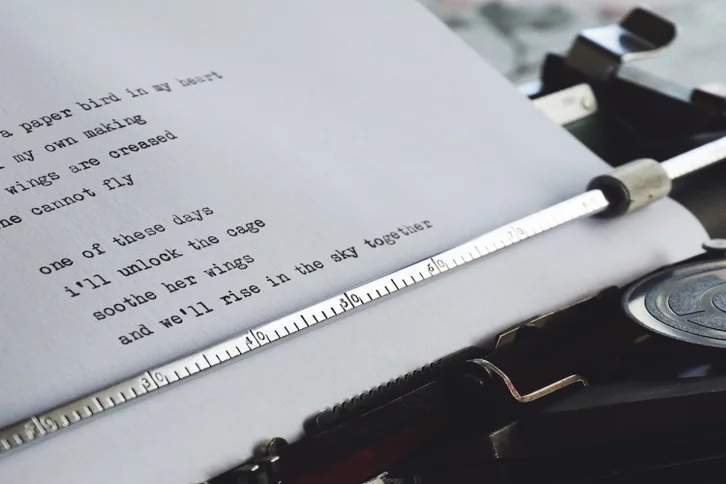
How to write a CV: useful tips & ideas
It is essential for students entering the job market to possess a powerful CV. It is your first chance to leave a good impression on prospective employers. Your well-developed CV reveals your skills, experience, and accomplishments. It is not merely a document but a tool that unlocks doors to thrilling career paths. Check these steps for writing a CV document like a pro!
What is a CV?
A CV is a comprehensive summary of your educational and occupational background. Your brochure gives employers a glimpse of who you are, what you have achieved, and your skill set. A CV is more extensive than a resume, which is brief and to the point and may include your entire career. But what are the differences between a CV and a resume? Well, these are both documents used for job applications, but they differ in length, purpose, and layout.
Writing tip from SpeedyPaper
How long should a CV be?
The length of the curriculum usually determines your experience and accomplishments. Let's say you want to create a CV today. The best CV for students or recent graduates is one to two pages long. It is a large enough space to describe your education, related experiences, skills, and a few accomplishments without overloading the reader.
What should I include in my CV?
Wanna know how to write a CV correctly? Include critical areas that show your credentials and potential. One must make a concise, coherent profile of one's academic and professional path. Here are the essential sections to include:
- Contact details: Provide your full name, phone number, email, and address.
- Profile: A concise yet compelling summary of your competencies and goals.
- Education: List your academic background starting from the most recent.
- Work Experience: Describe your work experience by mentioning job titles, companies, the dates you worked there, and your main responsibilities.
- Skills and achievements: Provide details on specific skills and highlight any awards or recognitions received.
- Interests: It is also advisable to provide a short list of hobbies or interests that showcase transferable skills or qualities that may be useful in the job.
- References: Give the names and contact details of people who can attest to your professional or academic performance.
All sections are important to your CV. It is easy to contact you based on your contact information. The profile provides a concise, summarized version of your abilities. Education and work history demonstrate your experience and knowledge.
Writing tip from SpeedyPaper
How do I format a CV?
We always deal with requests like, "Help with my CV!" It is OK to seek writing assistance. But how do you format this document? Formatting is essential in making a striking CV. Here is a list of crucial features:
- Section headings: Use them to organize your CV. Make them prominent by bolding their font size (14 or 16).
- Font choice: Opt for professional, readable fonts like Arial, Calibri, or Times New Roman. Use a font size between 10 and 12 for easy reading.
- Consistency: Ensure all fonts and sizes are consistent throughout the document.
- Chronological order: Present your work history and achievements in reverse chronological order so the most recent and relevant information appears first.
- Bullet points: Utilize bullet points for conciseness. It makes it easier for employers to grasp key information quickly.
- Margins: Maintain white space for readability. Aim for 2.5 cm margins around the document.
- File naming: Save your CV with a professional and identifiable name, like 'Jane-Doe-CV.'
- File format: Save as a PDF to ensure compatibility across devices unless specified otherwise in the job listing.
Now, let's talk about the CV Structure. A common CV structure includes:
- Personal and contact information;
- profile summary;
- education;
- work experience;
- skills;
- achievements;
- interests;
- references.
As you can see, all these nuances are logical and will not cause problems, even for beginners. Besides, here is a small CV example to give you a glimpse of the conventional structure and critical components to visualize a candidate.
Jane Doe's CV
Contact information:
- Name: Jane Doe
- Phone: (123) 456-7890
- Email: [email protected]
- Address: 123 Main Street, Boston, AT 12345
Profile:
Dedicated and motivated recent graduate with a Bachelor's in Business Administration. Proficient in project management, data analysis, and digital marketing. Seeking to leverage my academic knowledge and internship experiences in a dynamic business environment.
Education:
- Bachelor of Business Administration, Magna Cum Laude, University of Anytown, May 2023
- Key Courses: Strategic Management, Financial Accounting, Marketing Analytics
Work experience:
- Marketing Intern, LIL Corporation, Boston
June 2022 - August 2022
- Assisted in the development and implementation of social media marketing strategies.
- Conducted market research to analyze competitors and consumer trends.
- Supported the marketing team in organizing promotional events.
- Sales Assistant, BIT Retailers, Boston
September 2021 - May 2022
- Provided customer service, including product advice and handling transactions.
- Managed inventory and restocked merchandise.
- Collaborated with the team to meet monthly sales targets.
Skills and achievements:
- Proficient in Microsoft Office Suite, Google Analytics, and Adobe Photoshop.
- Strong communication, teamwork, and problem-solving skills.
- Awarded 'Best Marketing Project' in the university capstone course.
Interests:
- Photography, blogging about business trends, and long-distance running.
- References:
- Available upon request.
How to write a CV
Wanna know how to write a great CV? A CV is about describing your professional and academic successes in a comprehensive, concise, and structured format. Here is what you need to do.
Create a header with contact information
Start your CV with a header that includes your contact details. Your full name, phone number, email address, and perhaps your physical address or LinkedIn page should be this. This part makes it easy for potential employers to contact you.
Write a professional summary
You need to create a CV like a pro! A professional summary is a short statement at the top of your CV meant to introduce you to potential employers. It has to outline your key skills, experiences, and career objectives. Customize this section to suit the main demands of the jobs you are applying for. But you can always delegate this pat to Speedy Paper. We are not only a math homework helper but a multifunctional writing company!
Writing tip from SpeedyPaper
Detail your education
In the education part, provide your academic qualifications in reverse chronological order. Provide the names of institutions, degrees obtained, and dates of study. As a recent graduate, you may indicate relevant courses, projects, or other academic successes.
Provide your work experience
List job titles, company names, years of employment, and a summary of your duties and accomplishments in each position. Pay attention to the experiences relevant to the position you are applying for. This is how you can create a CV correctly.
Writing tip from SpeedyPaper
List your relevant skills
For the skills section, emphasize skills that qualify you as a good candidate. Include both soft skills, such as communication, teamwork, or problem-solving, and hard skills, such as knowledge of software, languages, or technical skills. Be specific and candid about your level of skill. Besides, check the process of writing a perfect project report, described in our latest article!
Describe your interests (Optional)
Adding your interests to your CV can help employers know more about your personality and how you can fit into their company's culture. This section should be concise and focused on the job. And you should know how to format a CV to make it look better.
How do I navigate gaps in my CV?
Closing CV gaps can be difficult, but they must be managed properly. Be ready to justify any notable gaps positively. You could mention:
- Freelance work;
- further education;
- volunteering;
- personal projects;
- professional development.
When describing gaps in your resume, emphasize how these experiences facilitated personal and professional development. Emphasize skills and knowledge acquired during these periods. Besides, you can always opt for resume writing services online like Speedy Paper to do the job!
Creating a winning CV
Writing an effective CV involves thoughtful consideration of its content and structure. Your CV should be able to demonstrate your strengths, skills, and experiences well. It has to be specific, to the point, and relevant to the position you are applying for. Suppose the process of creating a CV seems intimidating, or you are unsatisfied with the results. In that case, you may turn to Speedy Paper for professional CV writing services that are provided promptly. Our help writing paper service is here to assist!




Comments (0)
Thank you for your comment! 🌟
It has been submitted and is awaiting moderation. Stay tuned—it will be visible soon!